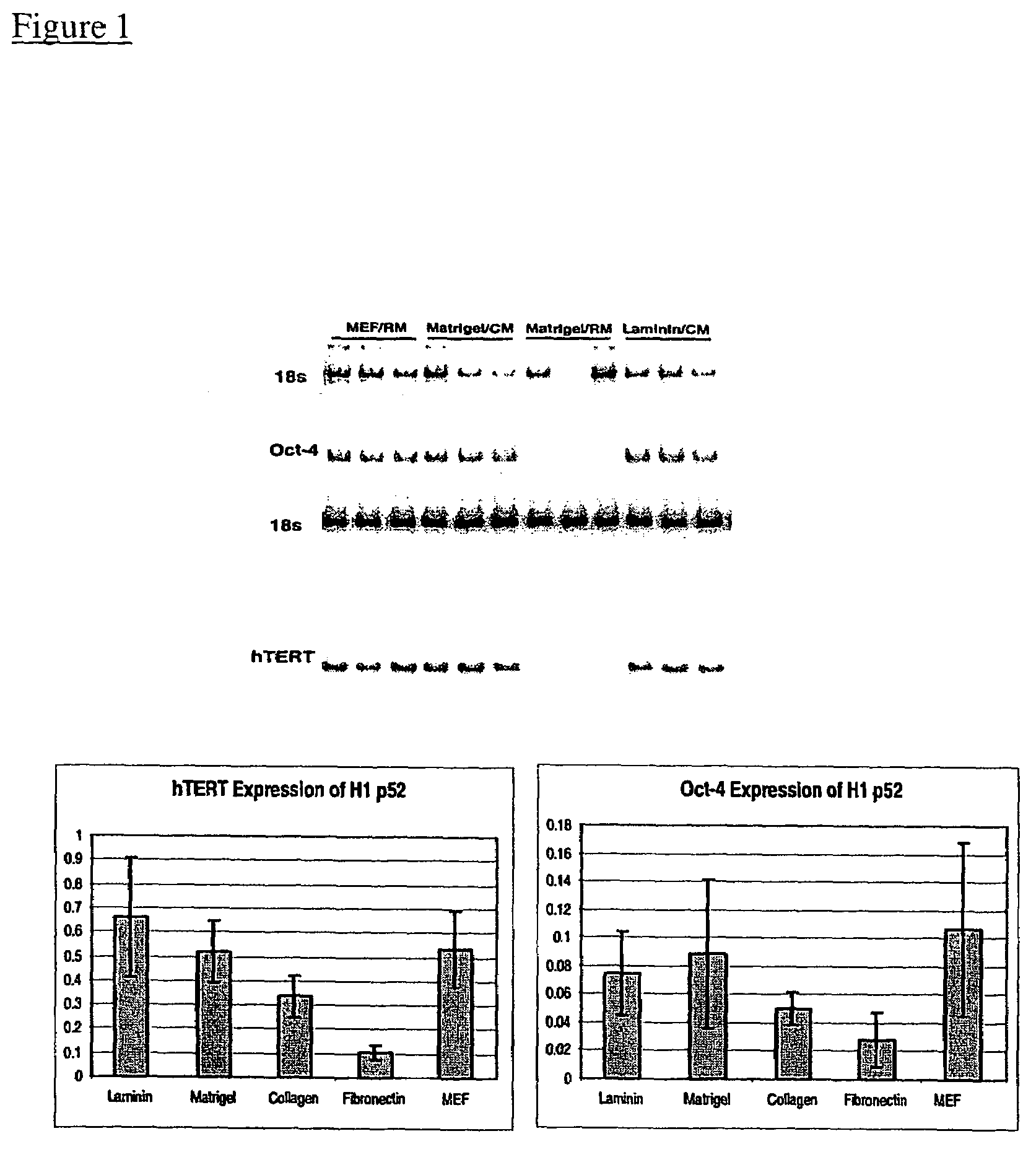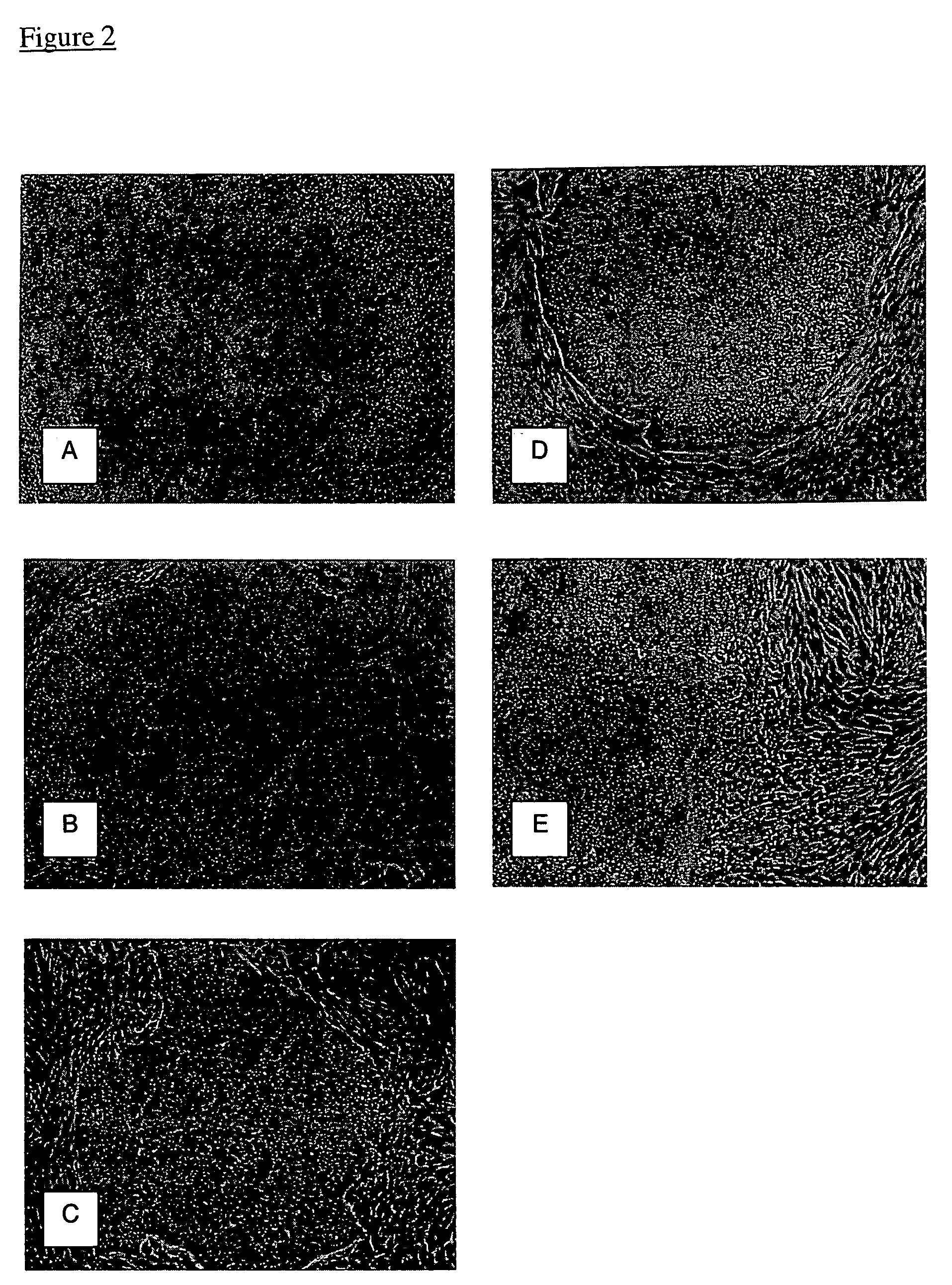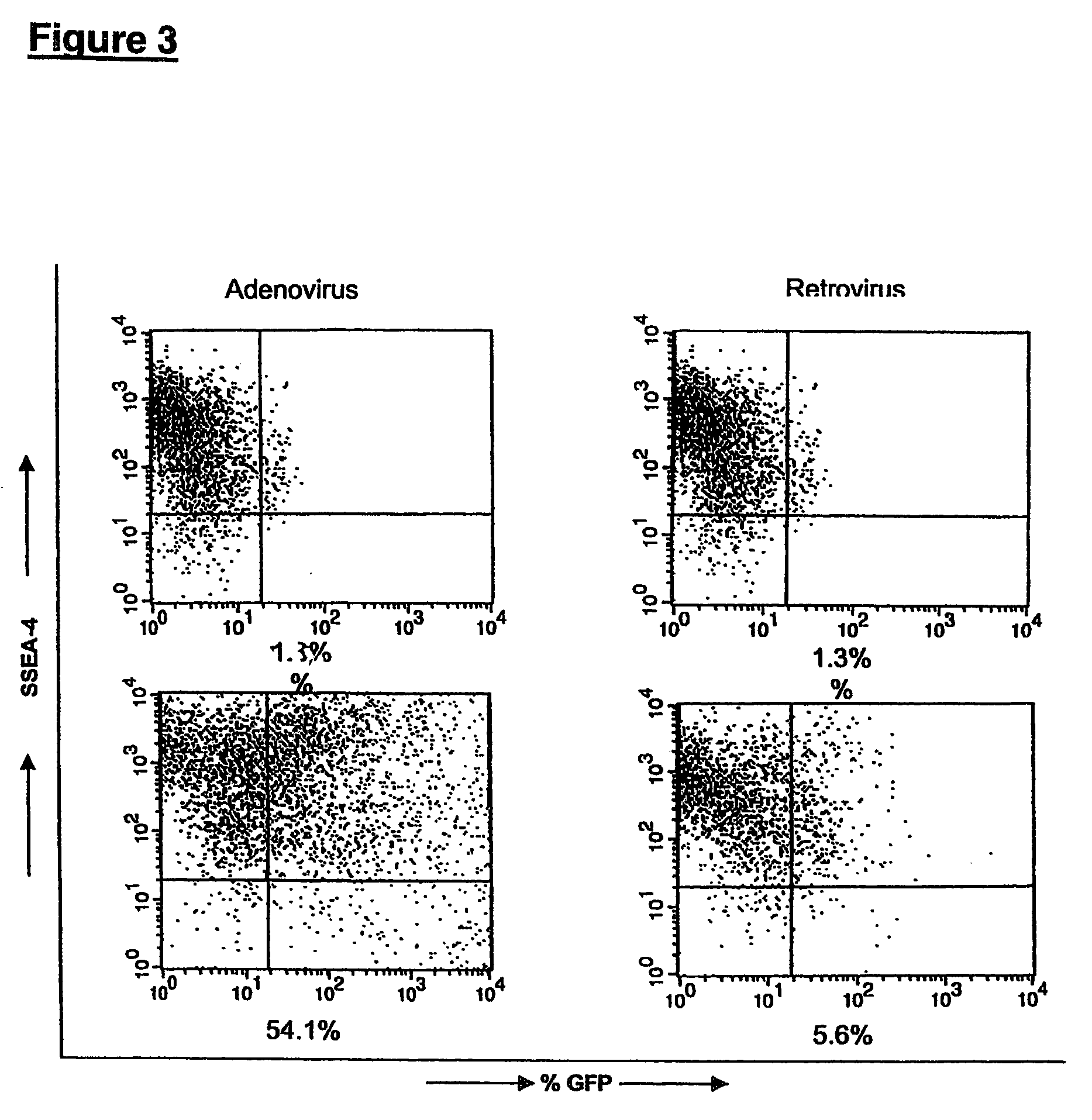Human embryonic stem cells having genetic modifications
a technology of human embryonic stem cells and genetic modifications, which is applied in the direction of genetically modified cells, artificial cell constructs, skeletal/connective tissue cells, etc., can solve the problems of significant challenge to the usual methods of making genetically altered cells, and more difficult to grow and manipulate than mouse cells
- Summary
- Abstract
- Description
- Claims
- Application Information
AI Technical Summary
Benefits of technology
Problems solved by technology
Method used
Image
Examples
example 1
Growing hES Cells in the Absence of Feeder Cells
[0096]Undifferentiated hES cells isolated on primary mouse embryonic feeder cells were propagated in the absence of feeder cells. The culture wells were coated with Matrigel®, and the cells were cultured in the presence of conditioned nutrient medium obtained from a culture of irradiated primary fibroblasts.
Preparation of Conditioned Media (CM) From Primary Mouse Embryonic Fibroblasts (mEF):
[0097]Fibroblasts were harvested from T150 flasks by washing once with Ca++ / Mg++ free PBS and incubating in 1.5-2 mL trypsin / EDTA (Gibco) for about 5 min. After the fibroblasts detached from the flask, they were collected in mEF media (DMEM+10% FBS). The cells were irradiated at 4000 rad (508 sec at 140 kV: shelf setting 6 in a Torrex generator), counted and seeded at about 55,000 cells cm−2 in mEF media (525,000 cells / well of a 6 well plate). After at least 4 hours the media were exchanged with SR containing ES media, using 3-4 mL per 9.6 cm well o...
example 2
Growing hES Cells in Fresh Medium
[0106]Subsequent experiments investigated how different growth factors influence the proliferation and maintenance of undifferentiated hES cells using medium that had not previously been conditioned.
[0107]hES cells passaged 20 times in conditioned medium were weaned onto an alternative medium designed for proliferation of human hematopoietic cells. X-VIVO™ 10 expansion medium was obtained from Biowhittaker; QBSF™-60 was obtained from Quality Biological Inc. The X-VIVO™ 10 formulation contains pharmaceutical grade human albumin, recombinant human insulin and pasteurized human transferrin. Exogenous growth factors, artificial stimulators of cellular proliferation or undefined supplements are not included in the X-VIVO™ 10 medium. They are also devoid of any protein-kinase C stimulators. QBSF™-60 is a serum-free formulation that contains recombinant or pasteurized human proteins. For use in these experiments, the X-VIVO™ 10 medium was supplemented with ...
example 3
Genetic Alteration of hES Cells on mEF Feeder Layer
[0113]This example provides conditions for introducing genetic alterations into hES cells grown on primary mEFs as already described. Before transfecting, hES cells were removed from the feeder layer with collagenase (˜200 units / mL), suspended in a final volume of 18 mL, and plated at 3 mL / well in 6 well plates pre-coated with gelatin and primary mEF feeder cells.
[0114]The replated cells were then tested with different transfection systems, including: Mammalian Transfection Kit (CaPO4 and DEAE reagents), Stratagene cat # 200285; TransIT-LT1 Mirus (Panvera), cat # MIR 2310; Polybrene (Sigma); Poly-L-Lysine (Sigma); Superfect™ (Qiagen); Effectene™ (Qiagen); Lipofectin™ (Life Technologies); Lipofectamine (differs from Lipofectamine 2000™) (Life Technologies); Cellfectin™ (Life Technologies); DMRIE-C (Life Technologies); Lipofectamine 2000 (Life Technologies); and electroporation using BioRad™ Gene pulser.
[0115]Under the conditions used...
PUM
| Property | Measurement | Unit |
|---|---|---|
| time | aaaaa | aaaaa |
| concentration | aaaaa | aaaaa |
| volume | aaaaa | aaaaa |
Abstract
Description
Claims
Application Information
 Login to View More
Login to View More - R&D
- Intellectual Property
- Life Sciences
- Materials
- Tech Scout
- Unparalleled Data Quality
- Higher Quality Content
- 60% Fewer Hallucinations
Browse by: Latest US Patents, China's latest patents, Technical Efficacy Thesaurus, Application Domain, Technology Topic, Popular Technical Reports.
© 2025 PatSnap. All rights reserved.Legal|Privacy policy|Modern Slavery Act Transparency Statement|Sitemap|About US| Contact US: help@patsnap.com



